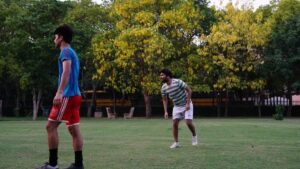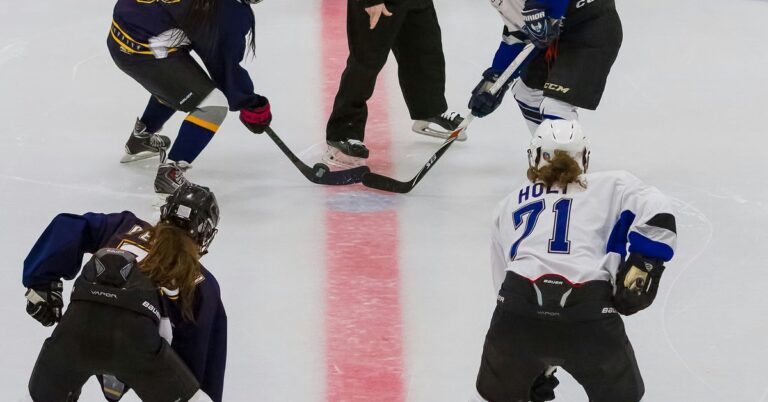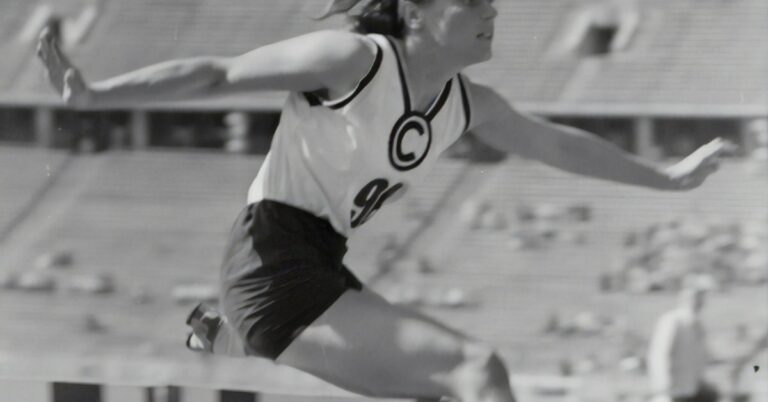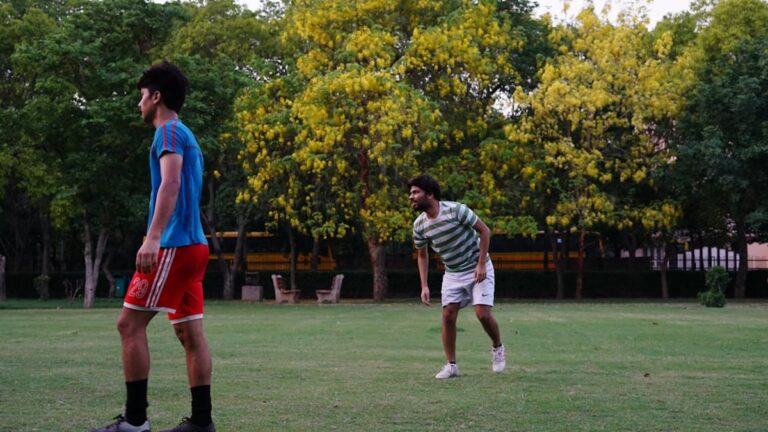Elevate Your Game with These Unconventional Training Techniques
When it comes to sports training, the path to improvement can often feel like a well-trodden one. Coaches tout the same drills, athletes swear by the same routines, and the mantra of “practice makes perfect” echoes through gyms and fields alike. But what if I told you that some of the most effective ways to enhance your performance might be hidden in plain sight, tucked away in the realm of unconventional training techniques? Let’s dive into the world of innovative training strategies that can elevate your game, whether you’re a weekend warrior or a seasoned pro.
1. Embrace the Power of Play
Have you ever noticed how kids can spend hours playing without a care in the world, completely immersed in the joy of movement? There’s a profound lesson in that. Playful training methods can lead to serious gains. A growing body of research suggests that incorporating game-like scenarios into practice can boost performance by enhancing decision-making skills and reaction times. It’s not just about running drills; it’s about creating an environment where athletes can learn through play.
For instance, instead of the usual passing drills in soccer, try a small-sided game where players must adapt to changing rules—like only using one touch or requiring a particular type of pass. This can sharpen their tactical awareness and improve their adaptability on the field. I remember watching a youth soccer team practice this way, and the kids were not only having fun but also developing skills that would serve them well in competitive matches.
Why It Works:
- Increased Engagement: Athletes are more likely to give their best effort when they’re enjoying themselves.
- Enhanced Learning: Play encourages creativity and problem-solving, key components in any sport.
- Natural Competition: Friendly rivalry can drive improvement without the pressure of traditional drills.
2. Training with Unusual Equipment
Sometimes, the tools we use can shape our training outcomes just as much as the techniques themselves. Enter unconventional training equipment—think of things like kettlebells, resistance bands, or even things as quirky as a heavy rope or a sandbag. These tools can add variety and challenge to your workouts, often targeting muscle groups in ways traditional weights cannot.
Let’s take, for example, the sandbag. When I first saw athletes dragging and lifting them, I thought it was a gimmick. Yet, after trying it myself, I realized it forces you to engage your core and stabilize your body in ways that a standard barbell simply can’t. It’s messy, it’s awkward, but boy does it build strength! Experts often note that the instability of uneven weights can activate stabilizer muscles, enhancing overall performance.
Innovative Equipment Suggestions:
- Sledgehammers: Swinging a sledgehammer can build explosive power and grip strength.
- Balance Boards: Perfect for improving stability and proprioception, which is crucial for injury prevention.
- Weighted Vests: Increase the intensity of your workouts without needing more equipment.
3. Visualization Techniques
Ever heard the saying, “If you can see it, you can achieve it?” Visualization is not just a fanciful notion; it’s a powerful tool used by elite athletes across all sports. The practice involves mentally rehearsing your performance, which can enhance your actual physical execution. This technique taps into the brain’s neuroplasticity, allowing athletes to prepare mentally for various scenarios they might face.
I recall an interview with a renowned sports psychologist who worked with Olympic athletes. He emphasized that visualization could be practiced anywhere—during a commute, before bed, or even while waiting in line for coffee. By mentally picturing every detail of a competition or game, athletes can reduce anxiety and boost their confidence. It’s a simple practice, yet its effects can be profound.
Steps for Effective Visualization:
- Find a quiet space where you can focus without interruptions.
- Close your eyes and take a few deep breaths to center yourself.
- Visualize yourself performing your sport at your best—see, hear, and feel every aspect of the performance.
- Repeat this practice regularly, especially before competitions.
4. Cross-Training with Dance
It may sound surprising, but dance can be an excellent addition to an athlete’s training regimen. While traditional workouts focus on strength and endurance, dance incorporates agility, coordination, and rhythm—all essential components of athletic performance. Plus, who doesn’t love a good beat? I can still picture my friend, a marathon runner, who took up salsa dancing to improve her footwork and ended up winning a local race shortly after. Coincidence? I think not!
Different dance styles can offer various benefits. For instance, ballet can enhance flexibility and core strength, while hip-hop can improve cardiovascular fitness and coordination. Not to mention, dancing can be a fantastic stress reliever—after a hard week of training, nothing beats hitting the dance floor (or your living room, let’s be real) to let off some steam.
Dance as Cross-Training:
- Improved Agility: Quick footwork and sharp movements can translate effectively to sports.
- Enhanced Coordination: Dance requires body awareness and control, which are critical for athletic performance.
- Mental Break: It’s a fun way to mix up your routine and avoid burnout.
5. Breath Control and Meditation
You might be wondering, “What does breathing have to do with sports?” Well, more than you might think! Controlled breathing can significantly impact performance, especially in sports that require endurance or precision, like running or archery. Techniques like diaphragmatic breathing or box breathing can improve oxygen delivery to muscles and help manage anxiety during competitions.
Meditation, while often seen as a way to calm the mind, also plays a pivotal role in improving focus. I remember attending a yoga class where the instructor emphasized the importance of breath control—not just for relaxation, but for enhancing athletic performance. It struck me that this wasn’t just a physical practice; it was a mental one too.
Breathing Techniques to Try:
- Diaphragmatic Breathing: Breathe deeply into your diaphragm, expanding your belly rather than your chest.
- Box Breathing: Inhale for four counts, hold for four, exhale for four, hold again for four. Repeat.
- 4-7-8 Breathing: Inhale for four counts, hold for seven, exhale for eight. Great for calming nerves before a big game.
6. Nutritional Experimentation
Nutrition is often viewed through a lens of strict guidelines—cutting carbs, loading up on protein, the endless cycle of trendy diets. However, what if you could elevate your game by experimenting with your diet instead? Athletes are increasingly exploring unconventional nutritional approaches, such as intermittent fasting or plant-based diets, to see what works best for their bodies.
Take, for instance, the rise of the plant-based athlete. Many elite competitors, from ultramarathoners to bodybuilders, have adopted vegetarian or vegan diets and report improvements in energy levels, recovery times, and overall health. I once had a lengthy chat with a triathlete who swore that switching to a vegan diet made him feel lighter and more agile. It’s worth considering that every athlete’s body responds differently to dietary changes, so a little experimentation could lead to surprising results.
Alternative Nutritional Approaches:
- Intermittent Fasting: Some athletes find that fasting enhances their focus and performance during workouts.
- High-Protein Plant Diets: Focus on legumes, nuts, and seeds for muscle recovery.
- Hydration Strategies: Experiment with electrolyte-rich drinks or natural alternatives like coconut water.
7. Recovery through Active Rest
Recovery is often treated as a passive process—think ice baths, foam rollers, and a lot of lying around. However, incorporating active recovery techniques can actually enhance muscle repair and performance. Light activities like walking, cycling, or swimming can promote blood flow and facilitate muscle recovery without putting additional strain on the body.
Interestingly, I once attended a seminar where a sports scientist argued that some of the best recovery happens during light, enjoyable activities. He pointed out that going for a leisurely bike ride after a hard workout not only feels good but also aids recovery, allowing your body to heal while still keeping it moving. It’s a win-win!
Active Recovery Ideas:
- Leisurely Walks: Gentle movement can promote circulation and healing.
- Light Swimming: A great way to relax the muscles and ease soreness.
- Yoga or Stretching: Focus on flexibility and breathing to facilitate recovery.
8. Mindfulness and Focus Techniques
In the fast-paced world of sports, maintaining focus amid distractions is key to success. Mindfulness techniques, such as grounding exercises and single-tasking, can help athletes hone their concentration and manage the inevitable stress of competition. By training the mind alongside the body, athletes can achieve a state of flow that enhances performance.
During my years covering various sports, I’ve observed athletes who struggled with performance anxiety transform their approach through mindfulness. For instance, a basketball player I spoke with used visualization and mindfulness techniques to improve his free-throw shooting under pressure. He described how being present in the moment helped him block out the noise of the crowd, leading to better performance. It’s a powerful reminder that sometimes, the battle is as much mental as it is physical.
Mindfulness Techniques to Explore:
- Grounding Exercises: Focus on your surroundings and sensations to stay present.
- Single-Tasking: Concentrate on one task at a time, whether it’s a drill or a game strategy.
- Body Scan Meditation: Take time to tune into your body and release tension before a performance.
9. Unorthodox Warm-Up Routines
Ah, the warm-up—the often-dreaded yet essential part of any training session. While many athletes stick to traditional routines, experimenting with unorthodox warm-ups can yield surprising benefits. Think of things like dynamic stretching, dance-inspired movements, or even martial arts techniques to get your body ready for action. The aim is to wake up the muscles in a fun and engaging way!
One memorable moment from my career involves watching a team of rugby players engage in an energetic dance-off as their warm-up. It was hilarious, but it got their blood pumping and spirits high. They went on to win that match, and it made me wonder if there’s something to be said about shaking things up before the serious business begins.
Creative Warm-Up Ideas:
- Dynamic Stretching: Incorporate movements like leg swings and arm circles to increase mobility.
- Games and Challenges: Add playful elements like tag or obstacle courses to engage athletes.
- Martial Arts Movements: Incorporate kicks and punches to activate various muscle groups.
10. The Role of Community and Support
Finally, let’s not overlook the importance of community in an athlete’s journey. Training in a supportive environment can provide motivation, accountability, and camaraderie that enhance performance. Whether it’s a local running group, a training buddy, or an online community, surrounding yourself with like-minded individuals can elevate your game in ways you might not expect.
I’ve always believed in the power of team spirit. I recall a time when I joined a local cycling group. The encouragement and shared experiences made every ride enjoyable and pushed me to go further than I thought possible. The sense of belonging can be a powerful motivator, reminding us that we’re not alone in our pursuit of greatness.
Building Community:
- Join Local Clubs: Seek out groups related to your sport for shared training and motivation.
- Online Forums: Participate in discussions and share experiences with a broader audience.
- Accountability Partners: Find a training buddy who can help keep you on track.
Conclusion: Embrace the Unconventional
As we’ve explored, unconventional training techniques can offer a fresh perspective on performance enhancement. Whether it’s incorporating playful elements into your practice, experimenting with innovative equipment, or tapping into the power of mindfulness, these strategies can breathe new life into your routine. The key is to remain open-minded and willing to explore the possibilities. You might just find the secret sauce that elevates your game to new heights!
In the end, every athlete’s journey is unique, and the best training approach is one that resonates with you personally. So, go ahead—try something new, step outside your comfort zone, and embrace the unconventional. Who knows? The next breakthrough in your performance may be just an experiment away!













